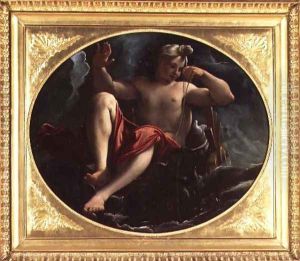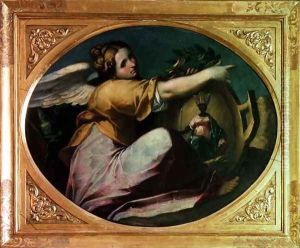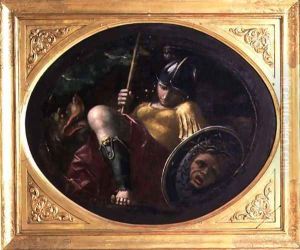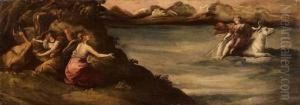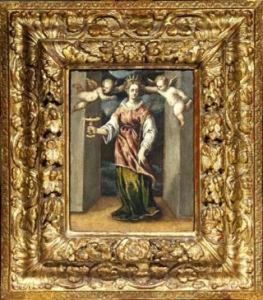Gaspare Venturini Paintings
Gaspare Venturini was an Italian artist known for his contributions to the Baroque period, particularly in the realm of painting and engraving. Born in 1650, Venturini's works are often characterized by their dynamic compositions, dramatic use of light and shadow, and the emotional intensity of the figures depicted, elements that are hallmark of the Baroque style that flourished in Europe during the 17th century. Although not as widely recognized as some of his contemporaries, Venturini's contributions to the art world during his lifetime were significant, showcasing a masterful understanding of the Baroque aesthetic and an ability to convey complex narratives through his art. Venturini's upbringing and early life are not extensively documented, but it is known that he worked primarily in Italy, contributing to the rich tapestry of Italian Baroque art. His works were primarily religious in nature, reflecting the period's deep connection between art and spirituality. This was a time when the Catholic Church was commissioning art as a means of inspiring faith among the populace, and artists like Venturini played a crucial role in this visual dialogue. Venturini's paintings and engravings often depicted scenes from the Bible, the lives of saints, and other religious themes, imbued with a sense of divine presence and emotional depth that sought to engage the viewer on a spiritual level. Despite his contributions, detailed records of Venturini's life, including his training and the scope of his influence, remain sparse. What is clear, however, is that his work reflects the broader trends of the Baroque movement, which emphasized movement, contrast, and sensory appeal to elicit an emotional response from the viewer. Venturini's ability to integrate these elements into his art suggests that he was deeply embedded in the artistic culture of his time, engaging with the ideas and techniques that defined the Baroque period. He passed away in 1710, leaving behind a body of work that, while not as prolific or well-known as some of his peers, contributes to our understanding of Baroque art and its development in Italy. Today, Venturini's works are studied for their artistic merit and as examples of the broader cultural and religious currents of his time.
